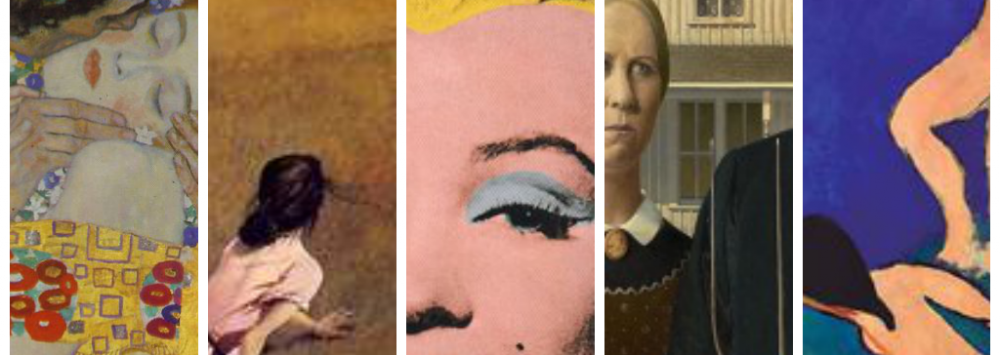*** JENNY HOLZER ***
By: Natalie Pompos
********
EDUCATIONAL BACKGROUND
1977 Independent Study Program, Whitney Museum of American Art, New York
1977 Master of Fine Arts, Rhode Island School of Design, Providence, RI
1972 Bachelor of Fine Arts, Ohio University, Athens, OH
1970–1971 University of Chicago, Chicago, IL
1968–1970 Duke University, Durham, NC
*************************
CONCEPTUAL ART MOVEMENT
The Conceptual Art Movement placed great emphasis on ideas and creation rather than traditional artistic elements as well as standards. The Movement encompassed many ideas rather than a cohesive theme.
Throughout the mid-1960s into the mid-1970s, Conceptual artists defied artistic ideals with their works. An artist’s idea was valued even higher than the “work” they created. According to TheArtStory.org, , “…concerns such as aesthetics, expression, skill and marketability were all irrelevant standards by which art was usually judged.”
Conceptual art is considered the most radical of the avant-garde style; the Movement expanded what is considered under the umbrella of art.
*****************
EARLY YEARS
On July 29, 1950, American conceptual artist Jenny Holzer was born in Gallipolis, Ohio. Initially (1968–1970), Holzer began acquiring an art foundation at Duke University in hopes of becoming a successful abstract painter. She transitioned to also investing in printmaking and drawing classes at the University of Chicago. In 1972, Holzer completed a Bachelor of Fine Arts at Ohio University.
Holzer’s art education is extensive. During the summer of 1974, she additionally pursued art classes at the Rhode Island School of Design. She followed her summer studies by enrolling in their Master in Fine Arts program in 1975.
A year later, she relocated to New York City. She became involved in the Whitney Museum’s selective independent program. At this time she commenced her first works involving installations.
*****************
STYLE
Holzer’s early artistic inspiration was drawn from prolific colour field painters such as Morris Louis and Mark Rothko. When Holzer moved to New York, she began developing an artistic style highly influenced by various typography. The style she embraced became regarded as, “Language as Art.”
Her transition to incorporating text as a key component is believed to have been influenced by her time in The Whitney Program. Within the Program, she had to read a large amount of Western and Eastern philosophy and literature.
These texts triggered Holzer’s belief that the key message of these dense readings could be condensed into simplified phrases that everyone could appreciate. In 1978, her summaries of literary works became regarded as “Truisms.”
*****************
TECHNOLOGY & ART & TECHNIQUE
As technology advanced throughout Holzer’s artistic career, technology began to play an important role within her works. In particular, computers became highly integrated beginning in 1982. Nine of her “Truisms” were featured on a massive Spectacolour electronic display in the center of Times Square. Through funds allocated by the Public Arts Fund Program, she began integrating light emitting diodes. These modes of technological advances allowed Holzer to reach more expansive audiences.
Holzer’s communication of ideas through her works marked her as a successor of both the Conceptualist and Pop Art Movement. Within many of her works she communicates the realistic conundrums of everyday life.
Holzer’s unique artistic approach has led her to become incredibly successful throughout the world. Her texts have been translated into a myriad of languages to accommodate her dramatic international following. Some of her greatest accomplishments include a 1989 Guggenheim exhibit that involved a 535-foot electronic signboard adorning a concentration of Frank Lloyd Wright’s architectural masterpieces. In addition, in 1990, she became the first female artist selected to feature her work representing the America at the international art premiere known as Venice Biennale.
*****************
PUBLICATIONS
*A Little Knowledge (1979)
*Black Book (1980)
*Hotel (with Peter Nadin, 1980)
*Living (with Nadin, 1980)
*Eating Friends (with Nadin, 1981)
*Eating Through Living (with Nadin, 1981)
*Truisms and Essays (1983)
*****************
SELECTION OF WORKS
*****************
21st CENTURY COMPARISON
 Bruce Munro for the past 29 years has been a leader in light installations. The large scale of his work has made him world-renowned. His work is commonly displayed within gardens such as Cheekwood Botanical Gardens in Nashville, Tennessee. His 2012 exhibit at the Longwood Gardens in Pennsylvania drew nearly 300,000 spectators. Similar to Holzer, his work is primarily light installations. Both are specialists in their field attracting admirers throughout the globe. Munro utilizes many recyclable materials such as one outdoor installation that involved 40 gigantic towers constructed from over 10,000 recycled water bottles; the bottles changed colour in sync with a musical selection. Holzer use of extensive typography differs from Munro’s style.
Bruce Munro for the past 29 years has been a leader in light installations. The large scale of his work has made him world-renowned. His work is commonly displayed within gardens such as Cheekwood Botanical Gardens in Nashville, Tennessee. His 2012 exhibit at the Longwood Gardens in Pennsylvania drew nearly 300,000 spectators. Similar to Holzer, his work is primarily light installations. Both are specialists in their field attracting admirers throughout the globe. Munro utilizes many recyclable materials such as one outdoor installation that involved 40 gigantic towers constructed from over 10,000 recycled water bottles; the bottles changed colour in sync with a musical selection. Holzer use of extensive typography differs from Munro’s style.
*****************
PERSONAL REFLECTION
Jenny Holzer’s work exposed me to a completely new art form. The large scale of her works are fascinating; especially because they are primarily comprised of texts. The words and even each individual letter appears to take on a greater significance. As a viewer, I felt immersed in the pieces. I wish I had the opportunity to see some of her work from a first-person perspective. I am certain the effect would be even more dramatic. I am thoroughly impressed by her astoundingly impressive formal art training background. She truly is such an accomplished artist. I really appreciate Holzer’s invented style of “Truisms.” The idea to take established dense literature or concepts and condense them in a simplistic yet powerful manner is impressive.
******************
BIBLIOGRAPHY






